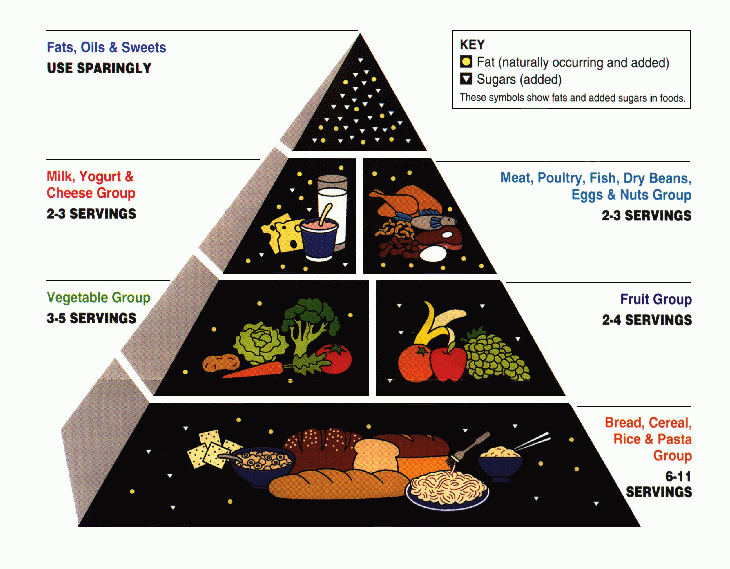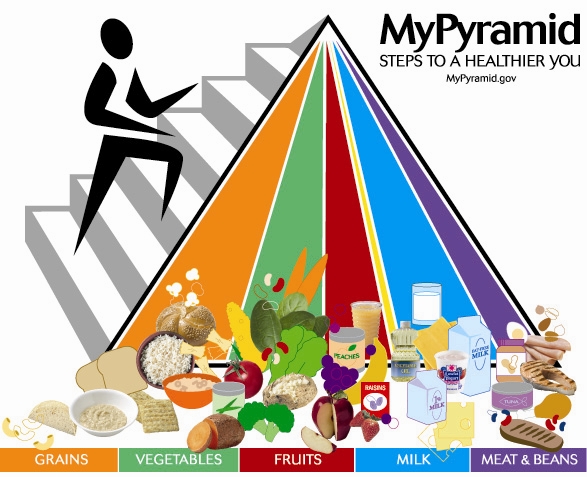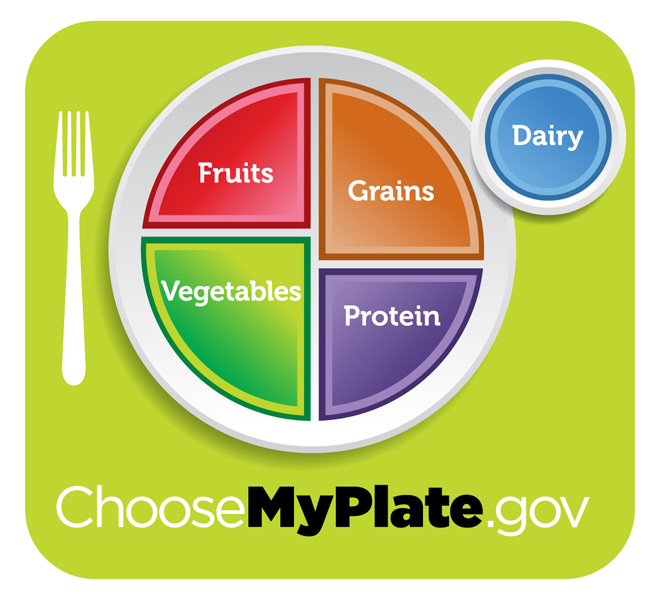New-trition: What Should I Eat?

The sciences are always evolving. This is obvious in technology, right? Raise your hand if you’re still using a flip phone! (And, if you are, good for you!) But medicine is also rapidly changing. In my opinion, this is especially true in nutrition science. Raise your hand if you think eating fat will make you fat! (Skip to the end of this post for the answer.)
The only thing constant is change
Trying to master nutrition science is fascinating. Not only is there a huge volume of information, but our understanding of that information changes constantly. To paraphrase Heraclitus, the only thing constant is change. And that’s exciting! But it’s also confusing and frustrating when it comes to knowing what to eat.
In this post, I’m taking a little trip down memory lane. Don’t worry - it won’t be a long trip. I’m an 80’s baby; so, I’m starting with the 90’s. My hope is that if your current understanding of nutrition science is like a Motorola Razr … you’ll be ready to upgrade to an iPhone X in a few minutes.
If you’re a Generation X’er, like me, you probably remember when your parents began acting all mid-lifey. It was the 90’s. Maybe there were new Tony Robbins CDs? Jane Fonda on VHS? And, if your household was anything like mine, there was a fridge and pantry overhaul. Whole milk became low-fat (or, gasp!) skim. Pans were greased with margarine instead of butter. White bread was traded for wheat bread. You might have even discovered turkey bacon!
So, what was the reason for this American food revolution? What made Americans turn away from staples of their diet? Science? Not exactly. It was our government, more specifically, the U.S. Department of Agriculture or USDA. While our government has a long history of making nutrition guidelines, it’s first real effort in nutrition education was during the 1990’s. And what was the USDA’s key educational message? A high fat diet was the reason behind our country’s leading causes of death: heart disease, stroke, and diabetes.
The Evolution of Nutrition Guidelines
Enter the low-fat diet campaign. Out went the butter! Whole milk too. And bacon started getting such a bad rap! In 1992, the USDA introduced the Food Guide Pyramid:

This pyramid organized 5 food groups with grains making up the base. Here are some snippets of the federal government’s food pyramid marketing in the 90’s:
“Start with plenty of breads, cereals, rice, and pasta ...”
“Grain products are good for you ... They are low in fat, but are filling … Many people think starchy foods such as breads, rice, and pasta are fattening. They are not.”
“Choose a diet low in fat ... to reduce your risk of heart attack ... Because fat contains over twice the calories of an equal amount of carbohydrates or protein, a diet low in fat can help you maintain a healthy weight.”
“Many of us eat too much sugar. Foods that are high in added sugar such as candies, soft drinks, and cakes are high in calories.”
Do you notice any themes? These are the themes that jump out at me:
- It is so pro-grains!
- It is anti-fat!
- It is in favor of low-calorie diets.
- It is against added sugar.
By 2005, the food pyramid had shaped-shifted into this, MyPyramid:

There are healthy fats?
Other than the impressive graphic design, do you notice a difference between this pyramid and the 1992 version? Can you see that tiny, yellow sliver between “fruits” and “milk?” That represents oils! Fat finally started getting a little positive recognition. That is to say, there are healthy fats and those healthy fats should be incorporated in good nutrition. But not evident in this image, was the first federal warning about trans fats. As a result of research performed throughout the 90’s, the USDA became wary of trans fat. The 2005 guidelines recommended that trans fats make up no more than 1% of food eaten.
What are trans fats?
What are trans fats? They are found in hydrogenated oils. What are hydrogenated oils? Hydrogen is added to liquid plant-based oils turning them into solids also called hydrogenated oils. Trans fats are primarily found here but they are also naturally occurring in tiny amounts. These trans fat-containing hydrogenated oils gained in popularity as the country was turning away from butter and lard. These oils are from plants; so, they must be healthy, right? As an aside, these oils also have long shelf-lives and they taste good. So, their usage increased through the 90’s and 2000’s. Bread, biscuits, and crackers were loaded with trans fats.
MyPlate was introduced in 2011 in an attempt to describe healthy eating habits instead of a restrictive lifestyle. But, in my opinion, other than the illustration, the message is more or less the same.

The most palpable change to the US dietary guidelines came in 2014: a nationwide ban on trans fats. But Michael Bloomberg spearheaded this change in New York City much earlier - in 2006. Eight years earlier! The then-mayor of New York City declared, “Nobody wants to take away your french fries and hamburgers! I love those things too. But if you can make them with something that is less damaging to your health, we should do that.” He was referring to trans fats. Yes, the same trans fats that were mentioned as an aside in the 2005 guidelines!
Why is there a trans fats ban?
Why were trans fats banned? Simply put, trans fats kill. In 2012, the Centers for Disease Control estimated that banning them would save 7000 lives per year! Their deadliness is related to our body’s processes in metabolism and inflammation which lead to more bad cholesterol (LDL) and less good cholesterol (HDL). This unhealthy cholesterol ratio led to a shocking increase in heart disease and heart attacks! Do you remember what the government wanted to prevent by jumping into nutrition education? Yup, heart disease and heart attacks. But they failed. More Americans died of heart disease in 2012 than in 1992.
How did experts get it so wrong? First, just a quick recap of 20 years of nutrition education in the US … Promote grains. Vilify fat. Sadly, for decades, we didn’t understand that we were encouraging Americans to eat 6-11 servings of grains that contained the one, truly dangerous fat - trans fat. Second, I honestly think there were some misinformed assumptions. When it came to fat, experts assumed, “a moment on the lips, a lifetime on the hips.” My final thought about where we went wrong is that science is hard. The scientific method is meant to disprove an idea or assumption. This is enough of a challenge in a controlled environment like a lab. That level of control is almost impossible in nutrition science. We’re talking about learning how real food affects real people. Not only are there factors other than nutrition that contribute to health, but people don’t live in labs. So, we have to rely on surveys and questionnaires which are harder to trust.
So, what should you eat?
So, what should you eat? There’s nothing new or trendy about good nutrition. Here are two questions you can ask yourself when you’re deciding what to eat. (1) Did it have a mom? (2) Did it grow from the ground? If the answer to those questions is “yes,” you’re off to a great start. That means you’re looking at real, whole food. Looking for more guidance? Check out my blog post on the Mediterranean diet, the Paleo diet, the Keto diet, and the Gluten-free diet. Those diets may not be for you but they all have two ideas in common. (1) Grains are not the most important part of good nutrition. (2) Healthy fats are necessary for good nutrition. And the most current US dietary guidelines agree with both!
P.S. No, eating fat does not make you fat. You can blame sugar for that. If you’d like to learn more about how sugar is sneaking into your diet and how to avoid it, click here.

